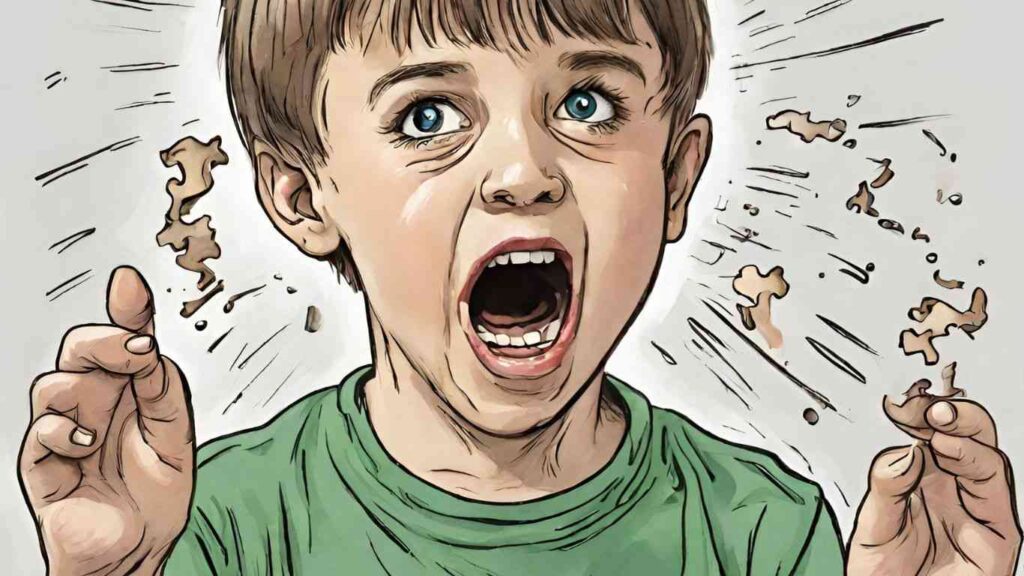Imagine navigating life’s rushing river with the steering of a paddle that only turns one way; this is akin to the rigidity and inflexibility some children on the autism spectrum may experience. These behavior traits can ripple out, impacting every facet of daily life and intricate social dances. The aim of this article, crafted with care by Circle Care Services, is to shed light on the delicate art of supporting and communicating with autistic children.
We embark on a journey to understand the roots of what may seem like autism stubborn behavior, unpeel the layers of these complex behaviors, and offer a lantern of strategies to guide caregivers and educators through the tunnels of challenge. With the compass of empathy and expertise, we’ll chart a course toward more harmonious interactions and enriched lives for those on the autism spectrum.
Behavior Traits of Autism
Picture a child who prefers the world in a predictable pattern – this is often the reality for children with autism. The terms rigidity and inflexibility might sound like stubborn fence posts, but in the context of autism, they represent a common tableau. These behaviors manifest as staunch routines or unyielding preferences in many autistic individuals, appearing as steadfast companions in their daily lives. It’s important to grasp that these are not choices of defiance but rather integral parts of the ASD tapestry.
The prevalence of these traits in autistic kids can be akin to a dance, where steps are memorized and deviation from the routine feels like a misstep. The potential causes? A kaleidoscope of factors including sensory sensitivities and a profound difficulty with change—imagine wearing scratchy wool when you expect soft cotton. The roots of these behaviors often lie in the quest for a safe and manageable world.
Unraveling this behavioral enigma is crucial. It’s not merely about managing a problem behavior; it’s about understanding a unique worldview. By seeing these behaviors as part of the disorder rather than misbehavior, we foster empathy and pave the way for more effective support and intervention, allowing each autistic child the chance to flourish in their own right.
Consequences of Labeling Autistic Children as Stubborn or Difficult
Imagine a young child, embarking on life’s journey with a backpack filled with stones labeled “stubborn” or “difficult.” This is an all-too-common scenario for many autistic people, where misperceptions weigh down both their self-esteem and their relationships. When autistic traits such as rigid behavior are misunderstood as willful defiance, the results can be as damaging as they are long-lasting.
- These labels can erode the child’s sense of self, making them feel alienated in a world where they are seen as the problem rather than someone facing challenges.
- Reframing these behaviors as part of the child’s neurological makeup, rather than a reflection of their character, opens doors to empathy and tailored support.
- A supportive approach allows the child to develop in their unique way, rather than being forced into a mold that doesn’t fit their needs.
- Labeling not only affects the child but also impacts how adults interact with them, often leading to a battle of wills instead of a bridge of understanding.
Communication and social skills may be affected, as the child could withdraw from social interactions to avoid further judgment. By avoiding labels and focusing on understanding the root of challenging behavior, we lay the groundwork for positive growth and genuine connections.
Practical Strategies for Managing Rigidity and Inflexibility
Embarking on the journey to manage rigidity and inflexibility in an autistic child may seem like navigating a labyrinth, but with the right strategies, caregivers can find a path through. It’s crucial to tailor these strategies to each child’s unique needs, ensuring that the approach is as personalized as their favorite pair of comfy shoes.
- Visual Schedules: Just as a map guides a traveler, visual schedules can help your child anticipate and prepare for new situations, thereby reducing anxiety.
- Positive Reinforcement: Much like watering a plant to see it grow, using positive reinforcement nurtures good behavior and flexibility.
- Therapy Involvement: Therapies such as ABA function as a compass, directing your child towards developing coping mechanisms and embracing change.
Remember, consistency is the golden thread stitching these efforts together, and patience is the lens through which progress is best viewed. With steadfast dedication, what once seemed like insurmountable behavioral rigidity can evolve into a world of new possibilities for your child.
The Role of Social Skills in Managing Rigidity and Inflexibility
Consider the social salsa: a dance of interaction that can be particularly challenging for individuals with high-functioning autism. For these dancers, the rhythm of social cues doesn’t always come naturally, leading to rigidity and inflexibility in various social situations. However, mastering the delicate steps of social engagement is critical in softening these rigid behaviors.
Autistic children often need a choreographer – in the form of social skills training – to guide them through the complex dance. For example, using social stories helps provide a script for the myriad of social interactions they may encounter, from sharing toys at home to collaborating with students in school. By rehearsing these narratives, they can better navigate the social seas with greater ease and less fear.
- Structured social skills training can illuminate the often murky waters of human interaction.
- Caregivers and educators can create a scaffold of support, reinforcing these new skills through consistent practice.
- Online group therapy sessions offer a stage for practicing social improvisation within a safe and controlled environment.
Ultimately, a symphony of patience, understanding, and tailored strategies plays a pivotal role in helping autistic children and teenagers manage the rigid tendencies that can disrupt the social concerto of daily life.
Supporting Autistic Children in School Settings
Imagine a school where every desk is a lily pad and every child with autism a unique frog, needing a particular combination of sunlight and shade. This imagery underscores the diverse requirements of autistic children in school settings. The academic pond can sometimes ripple with the challenges of rigidity and inflexibility, yet, it’s in this very environment that educators and parents can cultivate a thriving ecosystem of support.
Teachers, becoming the nurturing sun, can adopt strategies that warm the waters of understanding. Creating a supportive environment might mean incorporating visual cues to outline daily activities, or perhaps breaking down tasks into smaller, more digestible bites that don’t startle the school’s little amphibians. It’s a dance of patience and insight, all to the tune of individual needs.
- Collaborate on individualized education plans (IEPs) that respect each child’s unique learning style.
- Use visual schedules and clear instructions to create predictable routines that reduce anxiety.
- Ensure regular communication among parents, teachers, and the child’s wider support network.
Ultimately, the goal is to let each child’s abilities blossom, providing them with the necessary support to navigate the sometimes turbulent waters of education with confidence. Together, educators and parents can make the school pond a place of growth and discovery, crafting lily pads of opportunity for every child.
Coping with Rigidity and Inflexibility in Adulthood
For adults with ASD, the dance with rigidity and inflexibility can often step on the toes of everyday life. The reality is, that these traits don’t vanish with age; they evolve, sometimes into complex patterns that can tango with one’s mental health and social connections. It’s like trying to navigate a bustling city street with an outdated map; the need for updated strategies and professional help becomes paramount.
Seeking professional help is not a sign of weakness but a beacon of self-awareness. Therapies such as ABA therapy can offer new choreography for managing change stubborn thinking. Moreover, a trove of resources awaits at the American Autism Association and platforms like The Mighty, which can be akin to finding a compass in a dense forest.
- Connect with support networks to share experiences and build a community of understanding.
- Explore tools like cognitive-behavioral techniques to increase cognitive inflexibility.
- Lean on communication skills development to bolster relationships, be it with friends, family, or NT/ASD couples.
Embracing the journey of coping with rigidity and inflexibility in adulthood is a testament to one’s resilience. It’s about painting a broader spectrum of strategies, splashing color on the canvas of life beyond the black-and-white. Remember, the right resources and a supportive community can help turn life’s rigid patterns into a masterpiece of adaptability.
Conclusion
As we unfurl the complexities of rigidity and inflexibility in autistic individuals, it’s crucial to plant the seeds of understanding rather than labeling. We’ve traversed a path from recognizing these behaviors as part of the autism spectrum to equipping ourselves with tools to support our steadfast navigators. Through a chorus of strategies and a dash of unwavering patience, caregivers and educators can tailor a harmonious environment that fosters growth and adaptability.
Remember, every autistic child or adult is like a unique puzzle—complex and yet solvable. With the right pieces, such as positive reinforcement, individualized strategies, and a network of support, we can construct a more flexible, understanding world around them. Our collective efforts can bridge the gaps in social communication and soften the edges of inflexibility.







